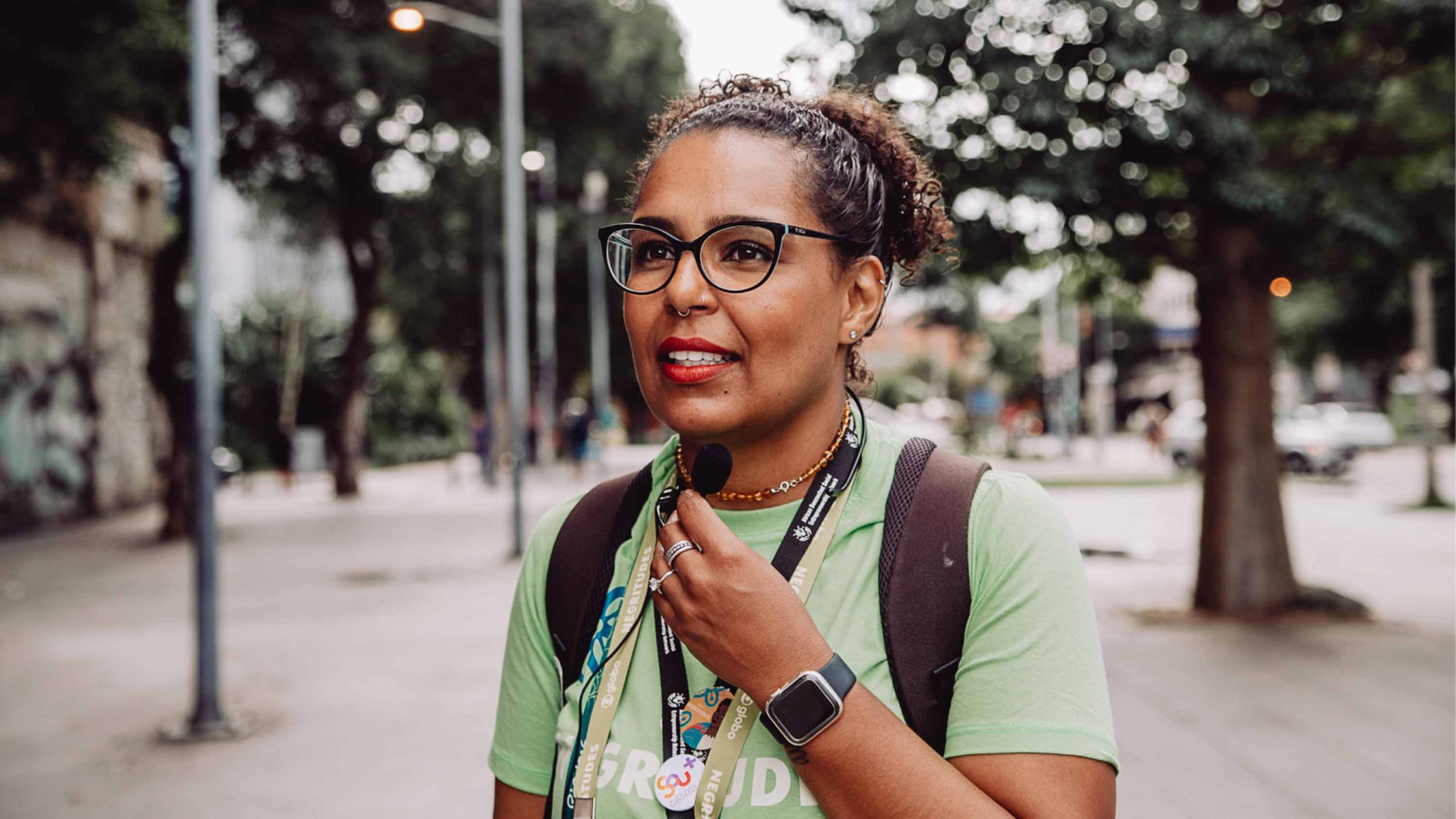If you step out from under the shadow of Christ the Redeemer and take a break from Copacabana Beach, you’ll find an historic and thriving Afro-Brazilian culture in Rio’s Little Africa district.
I’m back in Rio de Janeiro, back in Little Africa’s Gamboa neighborhood, and back with two people I’m very happy to see again—famed Black history tour guides, Lua Ferreira and Eddie Vander.
“Sister!” Lua says, embracing me. Beside her, Eddie’s face lights up. We last met in 2022 and these two Rio locals look exactly the same. Lua’s nut-brown skin and curly hair is still much like my own; Eddie, a broad-shouldered man who blinks enthusiastically when he speaks, is now sporting his natural curls—last I saw him, he had cornrows.
I’m immediately reminded of their warmth and shared passion for the city. Lua and Eddie’s black history tours are renowned for stretching on for hours, and a day with them feels like taking a history lesson with a friend. A friend you also want to go for dinner and drinks with. It’s no surprise their tours sell out months in advance.
Everyone, and I mean everyone, knows Lua. “I consider myself a connection between big institutions and the people” she says, waving at someone we pass. “I want to help build a new perspective around Brazilian international identity.”
We walk next to Pedra do Sal, at Conceição hill, one of the most well-known parts of Little Africa. Pedra do Sal is basically a huge rock surrounded by apartment blocks, where open-air parties take place. The name translates to ‘rock of salt’, named as such due to the enslaved Africans who were forced to work here, breaking huge chunks of salt on the giant rock during their bondage.
Pedra do Sal was Rio’s first community of free and escaped slaves (known as a Quilombo) and today it’s a cornerstone of Eddie and Lua’s tours. Last time I was here, Lua almost fought me when I told her I’d heard the birthplace of samba was Salvador, a city in the north. “Samba started here, in Pedra do Sal” she said gravely. Lesson learned.
Flanked by a staircase edged by a high colorful wall on which icons of Black Brazilian resistance are painted, today the legendary samba parties still take place. The area is just as vibrant as I remember, but Eddie is concerned.
“Little Africa has become popular in the last couple of years and it’s getting more exclusive, with less Black people living here,” says Eddie. “Today, to keep the public entertained, the DJ now plays Taylor Swift and the Backstreet Boys between the samba,” he says, exasperated. “I know the history of this place, so I find it offensive. The way things are going, Pedra Do Sal won’t exist in a few years.”
So is the answer less tourism, to preserve the fabric of the place? Eddie doesn’t think so. “The more people know our history, the more they can fight gentrification,” he explains. I hope he’s right.
Eddie is working overtime, looking after a group of three—an American influencer from Brooklyn and two guys who, like me, are from London. We all hit it off. Stuck between bodies slick with sweat in the humid night air and sipping caipirinha from plastic cups, we sway to samba until Eddie bows out. I’m grateful for the introductions, and we continue the party back at someone’s hotel until the early hours.
This is why I return to Rio, and to Brazil, I think to myself as the sun comes up. Yes, the weather is gorgeous year-round with mandarin sunsets that cast everyone in a deep golden glow. Yes, the beaches are seemingly designed for people-watching, framed by lush forested hills and world-famous landmarks, making it hard to peel yourself off them. But besides these things, it’s the incomparable passion for living which brings me back.

